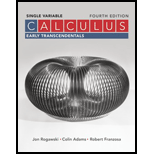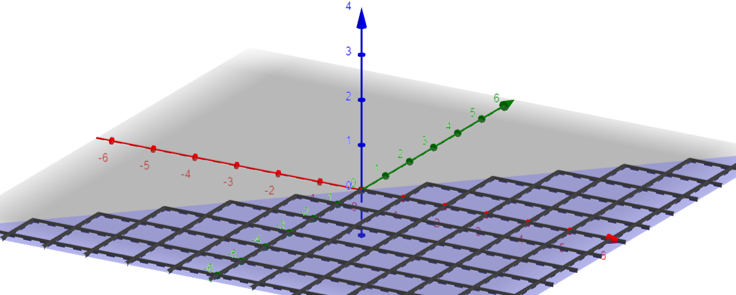
(a)
Sketch the domain of the function
Answer to Problem 1CRE
Solution:Domain of the function is
Explanation of Solution
Domain: The domain of the function is defined as the set of complete possible values which will make the function work and gives output as real values.
Given: A function as
Formula:
a. Domain of Square root function, is given as
b. The expression in the denominator can never be zero.
Calculation:
Given function is
Domain of the function:
To find the domain, set the expression the expression inside the square root greater than equal to zero and the expression in the denominator not equal to zero.
And
And
Thus, domain of the function is
Graph is as follows:

Conclusion: Domain of the function is
(b)
The value of and for the function
Answer to Problem 1CRE
Solution: The value of and
Explanation of Solution
Domain: The domain of the function is defined as the set of complete possible values which will make the function work and gives output as real values.
Given: A function as
Calculation:
Given function is
Conclusion: The value of and
(c)
A point such that for the function
Answer to Problem 1CRE
Solution: The point such that for the function Are and
Explanation of Solution
Domain: The domain of the function is defined as the set of complete possible values which will make the function work and gives output as real values.
Given: A function as
Calculation:
Given function is
Also,
Squaring both the sides, we get
Let ,
Then
Thus,
Points are and
Conclusion: The point such that for the function are and
Want to see more full solutions like this?
Chapter 14 Solutions
Loose-Leaf Version for Calculus: Early Transcendentals Single Variable
- The graph of f' is below. Use it to determine where the local minima and maxima for f are. If there are multiple answers, separate with commas. f'(x) 4- -5-4-3-8-1 3 2 1 x 1 2 3 4 5 -1 -2 -3 -4 Local minima at a Local maxima at =arrow_forwardThe graph of f' is below. Use it to determine the intervals where f is increasing. f'(xx) 4- -5 -3 -2 3 2 1 1 2 3 4 5 Cit +x 7 2arrow_forwardPlease focus on problem ii.arrow_forward
- Please focus on vi.arrow_forward的 v If A is an n x n matrix that is not invertible, then A. rank(A) = n C. det(A) = 0 B. Reduced row-echelon form of A = In D. AB BA= In for some matrix B 63°F Partly sunny Q Search 3 $ 4 40 FS 96 S W E A S T FG S Y & コ B ㅁ F G H J 4 Z X C V B N M 9 H V FIB - FIB ㅁ P L ว DELETE BACHSPACE LOCK L ? PAUSE ALT CTRL ENTER 7 2:20 PM 4/14/2025 HOME J INSERT SHIFT END 5arrow_forwardFor this problem just focus on problem i please.arrow_forward
 Calculus: Early TranscendentalsCalculusISBN:9781285741550Author:James StewartPublisher:Cengage Learning
Calculus: Early TranscendentalsCalculusISBN:9781285741550Author:James StewartPublisher:Cengage Learning Thomas' Calculus (14th Edition)CalculusISBN:9780134438986Author:Joel R. Hass, Christopher E. Heil, Maurice D. WeirPublisher:PEARSON
Thomas' Calculus (14th Edition)CalculusISBN:9780134438986Author:Joel R. Hass, Christopher E. Heil, Maurice D. WeirPublisher:PEARSON Calculus: Early Transcendentals (3rd Edition)CalculusISBN:9780134763644Author:William L. Briggs, Lyle Cochran, Bernard Gillett, Eric SchulzPublisher:PEARSON
Calculus: Early Transcendentals (3rd Edition)CalculusISBN:9780134763644Author:William L. Briggs, Lyle Cochran, Bernard Gillett, Eric SchulzPublisher:PEARSON Calculus: Early TranscendentalsCalculusISBN:9781319050740Author:Jon Rogawski, Colin Adams, Robert FranzosaPublisher:W. H. Freeman
Calculus: Early TranscendentalsCalculusISBN:9781319050740Author:Jon Rogawski, Colin Adams, Robert FranzosaPublisher:W. H. Freeman
 Calculus: Early Transcendental FunctionsCalculusISBN:9781337552516Author:Ron Larson, Bruce H. EdwardsPublisher:Cengage Learning
Calculus: Early Transcendental FunctionsCalculusISBN:9781337552516Author:Ron Larson, Bruce H. EdwardsPublisher:Cengage Learning





